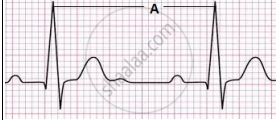Advertisements
Advertisements
प्रश्न
Define hypertension. Explain coronary artery disease and angina pectoris.
उत्तर
Hypertension: Persistently raised blood pressure higher than the normal is called hypertension.
i. Coronary artery disease:
- Coronary Artery Disease (CAD) is also known as atherosclerosis.
- In this, calcium, fat cholesterol and fibrous tissues get deposited in blood vessels supplying blood to the heart muscles making the lumen narrow.
ii. Angina pectoris:
- It is the pain in the chest resulting from a reduction in the blood supply to the cardiac muscles because of atherosclerosis or arteriosclerosis.
- It is characterized by severe pain and heaviness in the chest. The pain may spread to the neck, lower jaw, left arm and left shoulder. The pain usually results from exertion, when there is more demand of oxygen by the heart, but the supply does not meet the requirement.
APPEARS IN
संबंधित प्रश्न
Lowering of blood pressure is related with the production of ____________.
Fill in the blanks with suitable words given below:
The instrument used to find out the blood pressure is known as ______.
Explain the Term
Pulse rate
Multiple Choice Questions
Blood pressure is measured by:
Identify ‘A’ from the following ECG.

Action of ADH increases the blood volume which stimulates the secretion of ______.
____________ refers to blocking of arteries is due to deposition of fats and calcium.
Match the following and choose the correct option.
| Column I | Column II | ||
| i. | Hyperthyroidism | a. | Goitre |
| ii. | Hyposecretion of glucocorticoids | b. | Addison's disease |
| iii. | Hypothyroidism | c. | Graves' disease |
What is normal blood pressure?
Note the relationship between the first two words and suggest a suitable word/words for the fourth place:
Chest pain : Angina pectoris :: Heart attack : ______
